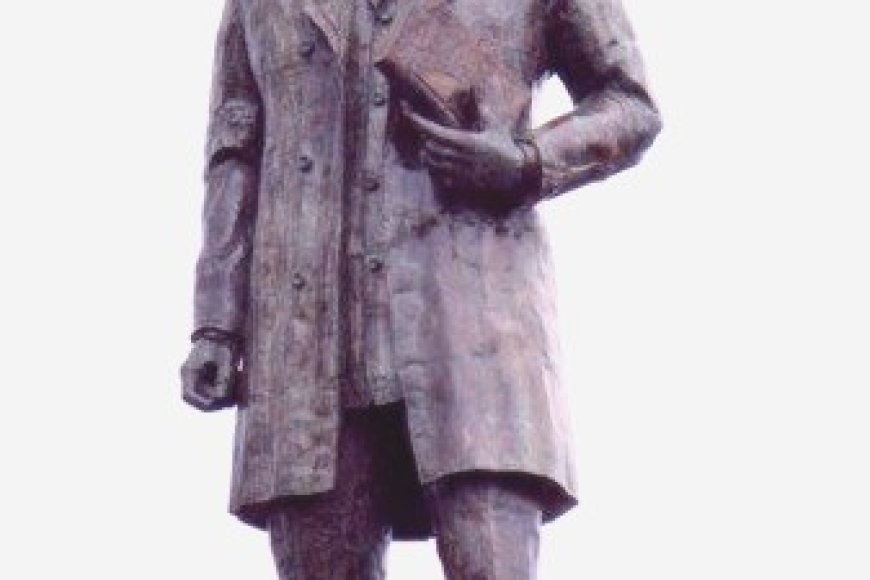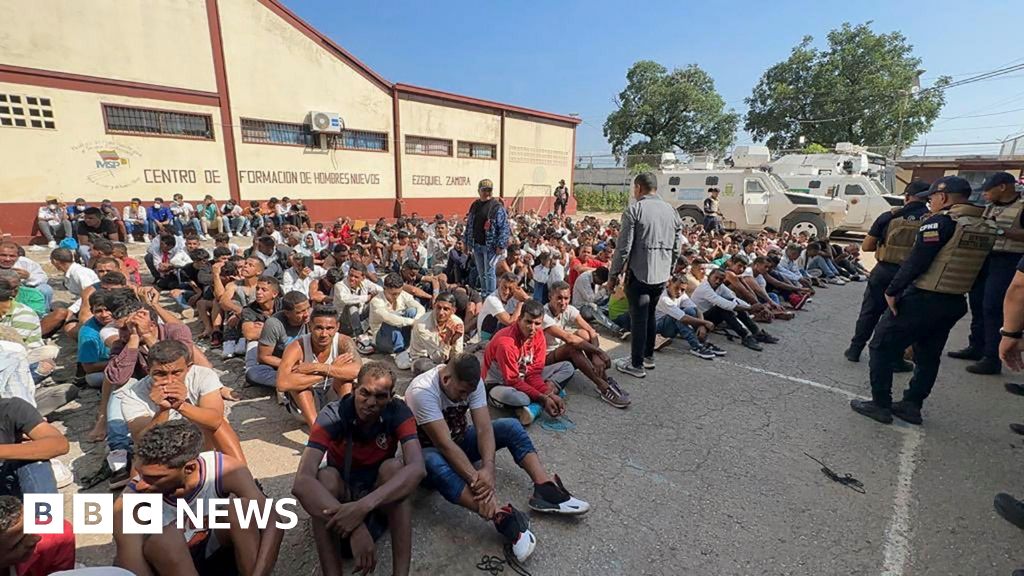Sunday, May 18, 2025 | 2 a.m.
Editor’s note: “Behind the News“ is the product of Sun staff assisted by the Sun’s AI lab, which includes a variety of tools such as Anthropic’s Claude, Perplexity AI, Google Gemini and ChatGPT.
President Donald Trump signed an executive order Monday aiming to significantly reduce prescription drug prices in the United States — the latest chapter in a decadeslong struggle to control pharmaceutical costs that burden American consumers.[1][3]
The executive order implements a “most favored nation” pricing model that would tie U.S. drug prices to the lowest prices paid in other developed countries. Trump claims the measure will reduce prescription drug prices by 30% to 80%, though these projections come from the administration itself and remain unproven. Analysts and industry experts have expressed significant skepticism about both the feasibility and legal durability of such sweeping changes.[4][5]
“Starting today, the United States will no longer subsidize the health care of foreign countries, which is what we were doing,” Trump said at the signing ceremony. The order directs pharmaceutical manufacturers to offer Medicare the lowest price paid for a drug in peer nations or face consequences.[6][7]
But this ambitious effort is not the first attempt to tackle the persistent problem of high drug costs, nor is it likely to be the last. The executive order resurrects a policy from Trump’s first term that was blocked by federal courts and ultimately rescinded by the Biden administration.[8][9]
Growth of the price gap
The disparity between U.S. drug prices and those in other wealthy nations wasn’t always so dramatic. In the 1980s, several countries spent about the same amount per capita on prescription drugs as the United States. But beginning in the 1990s, the gap began to widen substantially.[26][27]
According to a 2024 Rand Corporation study, prescription drug prices in the United States average 2.78 times those in 33 other nations. For brand-name drugs, the disparity is even more striking — U.S. prices are at least 3.22 times higher than in comparison countries, even after adjusting for rebates.[23][24]
While Americans pay less for unbranded generic drugs — about 67% of the average cost in comparison nations — these lower prices don’t offset the dramatically higher costs of brand-name medications. This occurs despite the fact that generic drugs account for approximately 90% of prescriptions filled in the U.S.[21][22]
Hatch-Waxman legacy
The modern era of U.S. drug policy began with the 1984 Drug Price Competition and Patent Term Restoration Act, commonly known as the Hatch-Waxman Act. This bipartisan legislation, sponsored by Rep. Henry Waxman, D-Calif., and Sen. Orrin Hatch, R-Utah, created the modern framework for generic drug regulation.[17][18]
The law had two primary goals: to facilitate the entry of generic drugs into the market and to compensate original drug developers for regulatory delays by the Food and Drug Administration. It established an accelerated pathway for generic drug approval while creating new protections for brand-name manufacturers.[19]
Before Hatch-Waxman, only about 19% of prescriptions in the United States were filled with generic medications. By 2007, that figure had risen to 63%, and today generics account for 90% of filled prescriptions.[18]
Yet paradoxically, as generic usage increased, so did overall spending on prescription drugs. By 2006, retail spending on prescription drugs had risen to $216.7 billion, driven by expanding use of existing drugs for new indications and the introduction of expensive blockbuster drugs.[19]
The Hatch-Waxman Act effectively created a dual market: one with robust competition and relatively low prices for generic drugs, and another with extended monopoly protections and skyrocketing prices for brand-name medications.[17]
Medicare Part D
The next major shift in prescription drug policy came with the Medicare Modernization Act of 2003, signed by President George W. Bush. This landmark legislation created Medicare Part D, providing outpatient prescription drug coverage to Medicare beneficiaries for the first time.[19]
While the program expanded access to medications for seniors, it included a critical restriction: Medicare was explicitly prohibited from negotiating directly with drug manufacturers over prices, a provision known as the “noninterference” clause.[16]
This restriction was a significant victory for pharmaceutical companies. Without the government’s ability to leverage Medicare’s massive purchasing power, drug makers could set prices with limited constraints. As the largest payer for prescription drugs in the country, Medicare’s inability to negotiate prices meant higher costs across the entire U.S. health care system.[24]
In the early years, Medicare Part D costs were lower than expected because of increased use of generic drugs. But as prices for brand-name medications continued to rise, the program’s costs grew substantially, placing increasing burdens on both taxpayers and beneficiaries.[19]
Incremental changes under Obama administration
During the Obama administration, the Affordable Care Act of 2010 included provisions that affected pharmaceutical pricing, though direct price controls remained elusive. The law created the Biologics Price Competition and Innovation Act, establishing a pathway for biosimilar drugs (generic versions of biologic medicines) while giving brand manufacturers 12 years of market exclusivity.[19]
The ACA also expanded insurance coverage, reducing the number of Americans who had to pay full retail prices for their medications. Despite these changes, the fundamental dynamics of U.S. drug pricing remained largely intact.[19][27]
Trump’s first attempt
During his first term, President Trump repeatedly highlighted the disparity between U.S. drug prices and those in other countries. In 2018, his administration introduced the concept of tying Medicare’s drug reimbursements to the prices in other countries.[10]
In late 2020, after losing his reelection bid, Trump finalized a “Most Favored Nation” rule that would have applied to Medicare payments for certain drugs administered in doctors’ offices. However, federal courts blocked the rule before it could take effect, and the incoming Biden administration formally rescinded it in 2021.[11]
Trump also implemented other measures aimed at reducing drug costs, including transparency rules and caps on insulin copayments for Medicare beneficiaries. His administration took steps to facilitate drug importation from Canada, though the impact of these measures was limited.[8][9]
Biden’s historic breakthrough
The Biden administration and congressional Democrats achieved what many considered a historic breakthrough in 2022 with the passage of the Inflation Reduction Act. For the first time, the law authorized Medicare to negotiate directly with pharmaceutical companies over the prices of certain high-cost medications, effectively creating an exception to the noninterference clause that had been in place since 2003.[12][16]
Under the program, Medicare selected an initial 10 drugs for price negotiations in 2023, with the negotiated prices set to take effect in 2026. The discounts are substantial, ranging from 38% to 79% off list prices, with estimated savings of $6 billion in the first year alone. Medicare has since selected an additional 15 drugs for the second round of negotiations, with prices to be implemented in 2027.[12][13][14]
The Inflation Reduction Act also included other provisions to reduce drug costs, including:
- Requiring drug companies to pay rebates to Medicare if prices rise faster than inflation
- Capping out-of-pocket spending for Medicare Part D enrollees
- Limiting monthly cost sharing for insulin to $35 for Medicare beneficiaries
- Eliminating cost sharing for adult vaccines covered under Medicare Part D[15][16]
These provisions represent the most significant changes to prescription drug pricing policy since the creation of Medicare Part D. However, they are being implemented gradually, with the full impact not expected until later in the decade.[16]
Trump’s new executive order
Trump’s executive order last week aims to expand and accelerate his administration’s previous efforts to reduce drug prices. The order directs the U.S. Trade Representative and Department of Commerce to take action against “unreasonable and discriminatory policies” that lower drug prices abroad, though it’s unclear what authority the White House has in this regard.[6][11]
The order gives pharmaceutical manufacturers 30 days to offer U.S. patients the lowest price paid for a drug in peer countries. If drug makers don’t comply voluntarily, the administration threatens to impose the prices through rulemaking.[3][5]
Unlike the Biden administration’s Medicare negotiation program, which applies to a limited number of drugs and is being implemented gradually, Trump’s order would apply to a much broader range of medications and aims to reduce prices “almost immediately.”[3][6]
Industry analysts have expressed significant doubts about the administration’s ability to deliver on its promised price reductions. The Pharmaceutical Research and Manufacturers of America (PhRMA) quickly criticized the order, with CEO Stephen Ubl arguing that “importing foreign prices from socialist countries would be a bad deal for American patients and workers.”[5][7]
Market reactions suggest investors share this skepticism. Following the announcement, pharmaceutical company stocks generally rose rather than fell, indicating that Wall Street does not expect the executive order to significantly affect industry profits. This skepticism is based in part on the history of similar proposals that have generated headlines but ultimately failed to transform the prescription drug market.[4][7]
Why are drug prices so high?
The persistent gap between U.S. drug prices and those in other countries can be attributed to several key factors:
Lack of centralized negotiation
Most developed countries have some form of centralized purchasing or price negotiation for prescription drugs. In countries with single-payer health care systems, the government negotiates directly with pharmaceutical companies as the primary or sole buyer. Even in countries with multiple insurers, governments often play a central role in price negotiations.[24][26]
In contrast, the U.S. system is highly fragmented, with thousands of insurers, pharmacy benefit managers and government programs all negotiating separately with drug manufacturers. This fragmentation reduces bargaining power and leads to higher prices.[20][21]
The Medicare noninterference clause has been particularly significant, preventing the largest single purchaser of drugs from using its buying power to secure lower prices. While the Inflation Reduction Act has begun to change this dynamic, the impact is still limited and gradual.[16][26]
Patent protection and market exclusivity
U.S. laws provide strong patent protections and market exclusivity for brand-name drugs. Pharmaceutical companies have become adept at extending these protections through various strategies, including minor reformulations and “pay-for-delay” agreements with generic manufacturers.[17][25]
These tactics have allowed drug makers to maintain monopolies and high prices long after the initial patent period would have expired. While the Hatch-Waxman Act aimed to balance innovation incentives with competition, in practice, it has often tilted toward protecting brand-name manufacturers’ profits.[17][19]
Lack of price controls
Unlike many other countries, the United States has few direct constraints on the prices pharmaceutical companies can charge. Drug makers are essentially free to set whatever prices the market will bear, leading to dramatic increases for many medications.[26][27]
Even insurance coverage, which shields many Americans from the full cost of their prescriptions, doesn’t necessarily control prices. Instead, it often shifts costs to premiums and taxpayers while allowing the underlying price increases to continue.[24][28]
The path forward
After decades of policies that have led to the highest prescription drug prices in the world, the United States appears to be at an inflection point. Both major political parties now acknowledge the problem, though they differ significantly on the preferred solutions.[27][28]
The Biden administration’s Medicare negotiation program represents a targeted, incremental approach focused on the highest-cost medications for Medicare beneficiaries. While limited in scope, this approach has already produced concrete results with agreed-upon price reductions set to take effect in 2026. Trump’s executive order aims for more immediate and dramatic price reductions across a broader range of drugs, but independent analysts view these ambitious targets with considerable skepticism given the legal and practical barriers to implementation.[12][13][3]
“Transforming drug pricing policy through executive action alone faces enormous hurdles,” said Larry Levitt, executive vice president for health policy at KFF, a nonpartisan health policy organization. “The history of prescription drug policy is littered with bold promises that ultimately delivered modest results.”[16]
Regardless of which approach prevails, it’s clear that the status quo of U.S. drug pricing is increasingly untenable. As Americans continue to pay nearly three times more than consumers in other wealthy nations for the same medications, the pressure for meaningful reform will only grow.[23][28]
Sources
[1] https://www.nbcnews.com/politics/trump-administration/live-blog/trump-administration-us-china-tariffs-drugs-saudi-arabia-live-updates-rcna206058
[3] https://www.usnews.com/news/national-news/articles/2025-05-12/trump-signs-executive-order-aiming-to-lower-prescription-drug-prices
[4] https://news.bloomberglaw.com/health-law-and-business/trump-aims-to-cut-drug-costs-by-pegging-to-international-prices
[5] https://www.newsweek.com/donald-trumps-prescription-drugs-executive-order-explained-2070775
[6] https://www.whitehouse.gov/fact-sheets/2025/05/fact-sheet-president-donald-j-trump-announces-actions-to-put-american-patients-first-by-lowering-drug-prices-and-stopping-foreign-free-riding-on-american-pharmaceutical-innovation/
[7] https://www.cbsnews.com/news/lower-medications-cost-trump-truth-social-executive-order/
[8] https://www.reuters.com/business/healthcare-pharmaceuticals/trump-says-he-will-cut-drug-prices-by-59-2025-05-12/
[9] https://www.npr.org/sections/shots-health-news/2025/05/12/nx-s1-5395625/trump-lower-drug-prices
[10] https://www.cnn.com/2025/05/12/politics/trump-executive-order-prescription-drug-prices
[11] https://www.whitehouse.gov/presidential-actions/2025/04/lowering-drug-prices-by-once-again-putting-americans-first/
[12] https://bidenwhitehouse.archives.gov/briefing-room/statements-releases/2024/08/15/fact-sheet-biden-harris-administration-announces-new-lower-prices-for-first-ten-drugs-selected-for-medicare-price-negotiation-to-lower-costs-for-millions-of-americans/
[13] https://www.cms.gov/newsroom/press-releases/hhs-announces-15-additional-drugs-selected-medicare-drug-price-negotiations-continued-effort-lower
[14] https://www.cms.gov/newsroom/fact-sheets/medicare-drug-price-negotiation-program-negotiated-prices-initial-price-applicability-year-2026
[15] https://bidenwhitehouse.archives.gov/briefing-room/statements-releases/2025/01/17/statement-from-president-joe-biden-on-the-next-fifteen-drugs-selected-for-medicare-drug-price-negotiation/
[16] https://www.kff.org/medicare/issue-brief/explaining-the-prescription-drug-provisions-in-the-inflation-reduction-act/
[17] https://www.statnews.com/2020/12/16/unaffordable-prescription-drugs-real-legacy-hatch-waxman-act/
[18] https://pmc.ncbi.nlm.nih.gov/articles/PMC2690175/
[19] https://pmc.ncbi.nlm.nih.gov/articles/PMC4115321/
[20] https://aspe.hhs.gov/reports/comparing-prescription-drugs
[21] https://www.goodrx.com/drugs/savings/why-are-prescription-drugs-more-expensive-in-the-us-than-in-other-countries
[22] https://www.healthsystemtracker.org/chart-collection/how-do-prescription-drug-costs-in-the-united-states-compare-to-other-countries/
[23] https://www.rand.org/news/press/2024/02/01.html
[24] https://www.commonwealthfund.org/publications/issue-briefs/2017/oct/paying-prescription-drugs-around-world-why-us-outlier
[25] https://pmc.ncbi.nlm.nih.gov/articles/PMC11147645/
[26] https://theconversation.com/why-the-us-has-higher-drug-prices-than-other-countries-111256
[27] https://kffhealthnews.org/news/article/fact-check-biden-prescription-drug-prices-nation-comparison/
[28] https://www.wusf.org/health-news-florida/2024-03-29/politifact-fl-us-pays-double-prescriptions-other-countries
.png)








 English (US) ·
English (US) ·